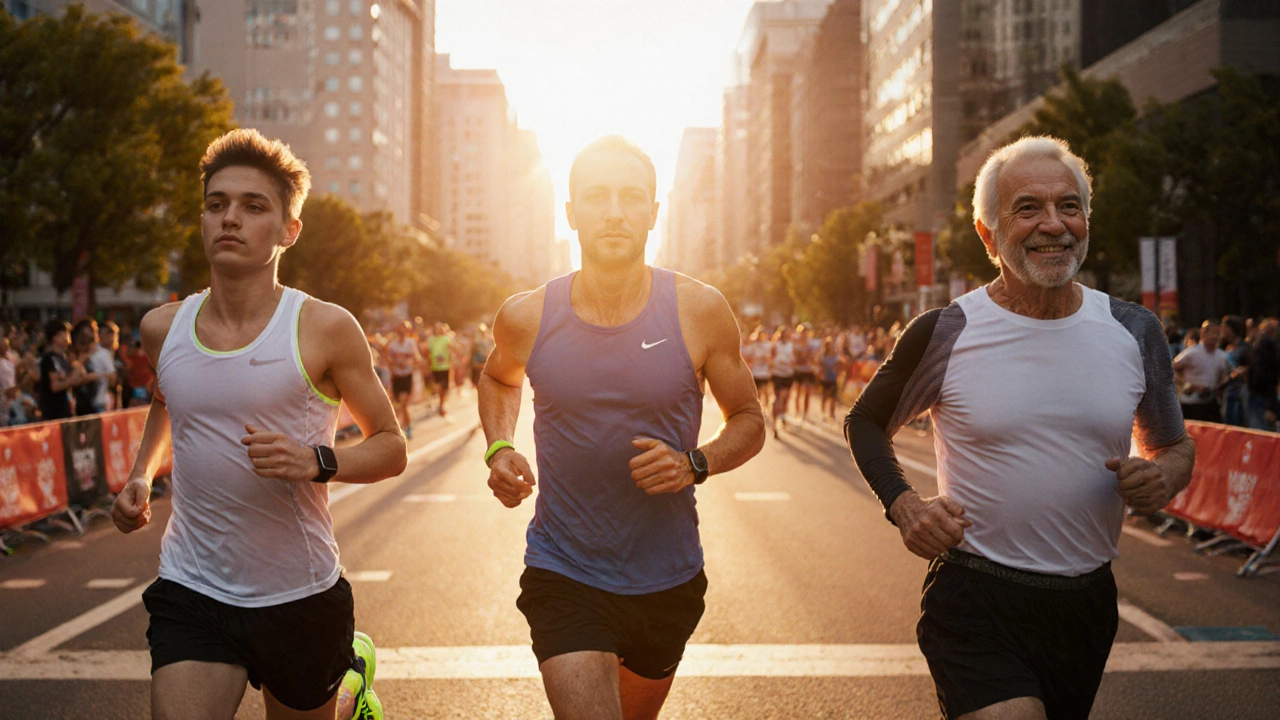
Optimal Marathon Age: When to Hit Your Peak
If you're wondering what age gives you the best chance to run a fast marathon, the answer lies in the optimal marathon age. When planning your optimal marathon age, the age window where speed, stamina, and recovery intersect most favorably for marathon distances. Also known as ideal marathon age, it helps you set realistic goals and training plans.
One of the biggest factors that shapes this window is peak performance age, the period in life when VO2 max, muscle elasticity, and hormonal balance typically reach their highest levels for endurance athletes. Studies of elite runners show that men often hit their fastest marathon times between 27 and 35, while women tend to peak a few years later, around 30 to 38. The reason is simple: the body’s aerobic engine is still maturing, and recovery ability remains strong enough to handle high‑volume weeks. So we can say that optimal marathon age encompasses peak performance age, creating a sweet spot for speed and durability.
Key Factors That Shape Your Ideal Age
Even if you land inside that age band, you still need marathon training, a structured program that balances mileage, speed work, and long runs to build the specific endurance required for 26.2 miles. Consistency matters more than intensity at first, and as you approach your optimal age, you can safely add tempo runs and interval sessions without overtaxing recovery. The training load should increase by no more than 10% per week to avoid injury spikes. In practice, runners who follow a progressive plan see performance gains that line up with their natural physiological peak, proving that optimal marathon age requires consistent marathon training.
Underlying all of this is endurance physiology, the collection of cardiovascular, respiratory, and muscular adaptations that allow the body to sustain effort for hours. As you age, mitochondrial efficiency and capillary density begin to decline, which slows oxygen delivery to muscles. However, regular endurance work can blunt that decline, keeping VO2 max higher for longer. This means that endurance physiology influences optimal marathon age, and smart training can shift the window a few years later for those who stay disciplined.
Beyond training and physiology, injury risk and recovery speed become decisive after the sweet spot passes. Research shows that runners over 40 experience a higher incidence of tendon complaints and stress fractures, especially if they ramp up mileage too fast. Recovery time after a marathon also lengthens; the typical 48‑hour soreness window can stretch to a full week for older athletes. In other words, injury risk rises after the optimal marathon age, while recovery declines, making smart periodisation essential for longevity.
Putting it all together, the optimal marathon age sits at the intersection of peak performance age, tailored marathon training, and strong endurance physiology, while staying clear of injury pitfalls. Below you’ll find articles that break down each piece in detail – from how your body reacts in the 48 hours after a marathon, to training plans that match your age group, and tips on boosting recovery speed. Use this guide to pinpoint your own sweet spot and start training smarter today.
